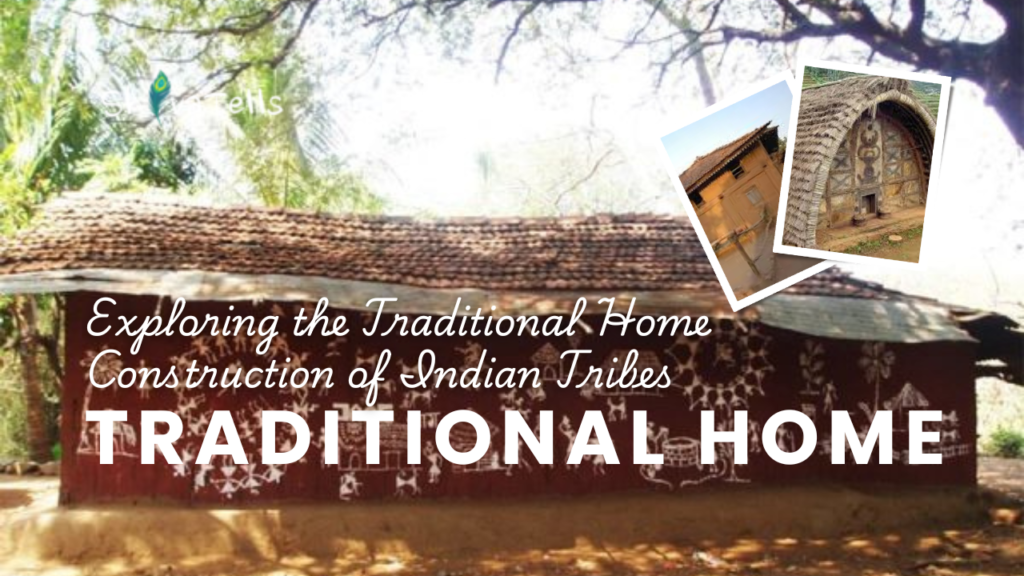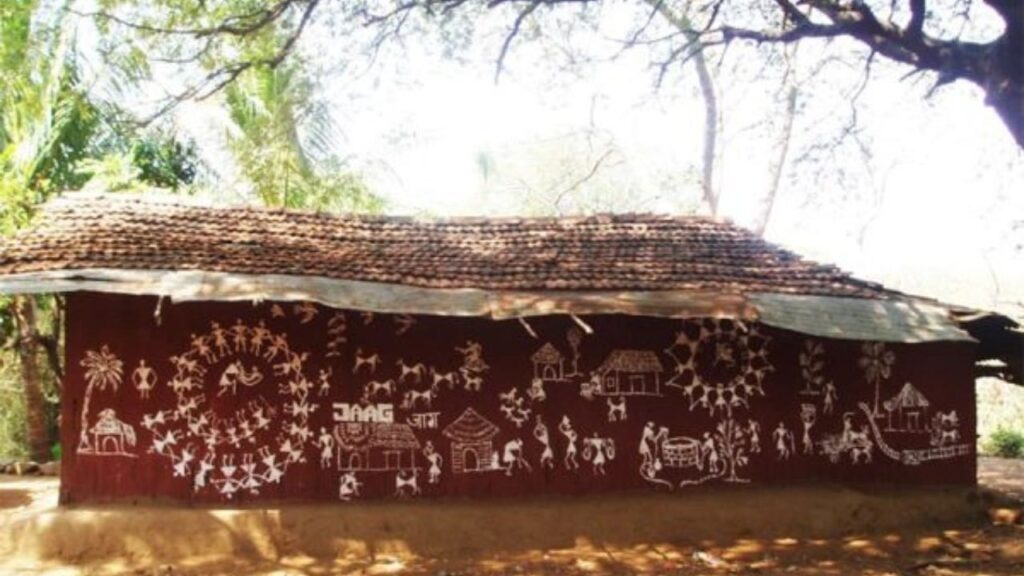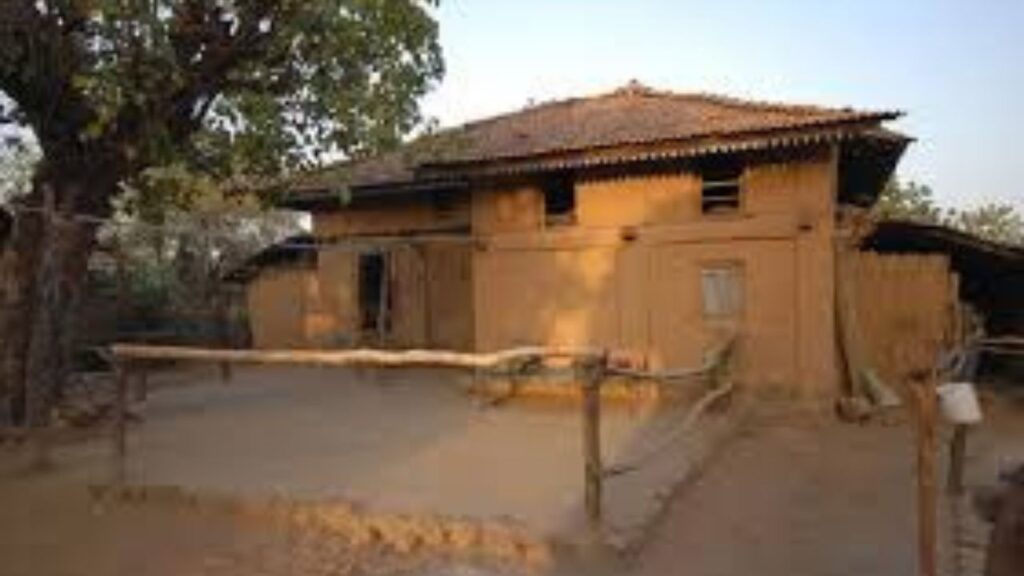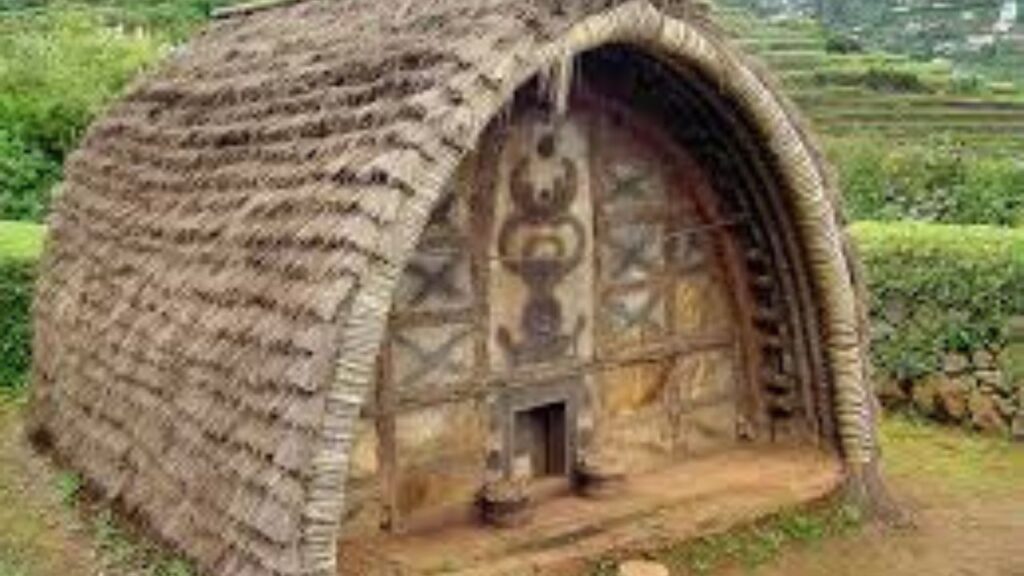Traveling through India offers a unique opportunity to explore the diverse cultures and traditions of its indigenous tribes. One of the most fascinating aspects of tribal life is their traditional home construction methods, which reflect their close relationship with nature and sustainable living. This article delves into the home-building practices of several tribes, showcasing the beauty and practicality of their designs.

Table of Contents
Mud Houses of the Gaddi Tribe in Himachal Pradesh
Nestled in the picturesque landscapes of Himachal Pradesh, the Gaddi Tribe is renowned for its mud houses, which are ideally suited to the region’s climatic conditions. Constructed primarily from mud, these homes are both sturdy and eco-friendly. The mud used in their construction provides excellent insulation against the cold winters and keeps the interiors cool during the scorching summer months.
The Gaddi homes often feature sloping roofs, which help shed rainwater efficiently. Their simple yet effective design allows for the preservation of heat during winter, creating a cozy atmosphere inside. The Gaddi people take pride in their homes, which are often adorned with vibrant decorations and personal touches that reflect their cultural heritage.
For travelers seeking an authentic experience, visiting Gaddi villages provides insight into the sustainable lifestyle of this nomadic community. You’ll find yourself surrounded by stunning mountain scenery, lush green pastures, and the warm hospitality of the Gaddi people.
Warli Tribe: Mud and Bamboo Marvels of Maharashtra

Traveling to Maharashtra, the Warli Tribe presents another intriguing example of traditional home construction. Their homes are built using a combination of bamboo frames, mud, and cow dung, forming a unique structure that is both functional and aesthetically pleasing. These houses typically have a square shape and feature simple designs that adapt well to the local climate.
The Warli homes are adorned with intricate Warli paintings, which depict scenes from daily life, nature, and community celebrations. These murals serve not only as decorative elements but also as cultural storytelling devices, conveying the tribe’s history and beliefs.
The thick mud walls of Warli homes provide insulation, keeping the interiors cool during hot summers and warm in the winter months. As a traveler, visiting a Warli village allows you to witness these beautiful homes up close and engage with the community, experiencing their rich traditions and artistic expressions firsthand.
The Longhouses of the Nyishi Tribe in Arunachal Pradesh
In the lush forests of Arunachal Pradesh, the Nyishi Tribe is known for constructing some of the longest traditional homes in the region. These longhouses, often accommodating multiple families, symbolize the strong sense of community and togetherness inherent in Nyishi culture.
The Nyishi homes are built using locally sourced materials, primarily bamboo and wood, with a design that emphasizes functionality and sustainability. These structures are raised off the ground to protect against flooding and pests, and they often feature decorative elements that reflect the tribe’s cultural identity.
Travelers venturing into Nyishi territory will find the longhouses to be a testament to the tribe’s resourcefulness and craftsmanship. The warm hospitality of the Nyishi people, combined with their rich traditions and vibrant festivals, makes this a must-visit destination for cultural enthusiasts.
Bhil Tribe: Nature-Inspired Traditional Homes of Rajasthan

In Rajasthan, the Bhil Tribe showcases an impressive construction style that emphasizes harmony with the environment. Their homes are traditionally built using mud, wood, bamboo, and thatch, featuring thick mud walls and sloping roofs. The designs often incorporate geometric patterns and tribal motifs, reflecting the Bhil’s deep connection to the natural world around them.
Bhil houses are typically arranged in groups or rows, situated near streams and forests, which not only provide essential resources but also create a sense of community. The vibrant colors and intricate designs of their homes stand out against the arid landscape, offering a glimpse into their rich cultural heritage.
For travelers, visiting a Bhil village offers a chance to engage with the community, participate in local festivities, and learn about their sustainable lifestyle, which is closely tied to the rhythms of nature.
The Adi Tribe: Stilt Houses of Arunachal Pradesh
The Adi Tribe, also from Arunachal Pradesh, has a unique approach to home construction that emphasizes sustainability and resilience. Their homes are crafted from wood, cane, bamboo, and leaves, with no metal or nails used in the construction. These houses are elevated on stilts, providing protection from floods and allowing for better ventilation.
The wooden floors of Adi homes are often made using grass or paddy straw, creating a comfortable living space that is in harmony with the surrounding environment. This design not only enhances the durability of their homes but also showcases the Adi Tribe’s deep respect for nature and traditional craftsmanship.
Visitors to Adi villages will be struck by the beauty of their stilt houses and the warm, welcoming spirit of the tribe. Exploring their communities offers travelers a unique perspective on sustainable living and the rich cultural heritage of Arunachal Pradesh.
Toda Tribe: Barrel-Shaped Huts of Tamil Nadu

Down south in Tamil Nadu, the Toda Tribe of the Nilgiri Hills has a distinctive home construction style characterized by barrel-shaped huts made from bamboo and grass. These huts are adorned with low doors and thatched roofs, reflecting their unique cultural practices and respect for the sanctity of their homes.
The design of the Toda huts is not only practical but also deeply symbolic. These homes provide insulation and protection from the elements while allowing the community to maintain its traditional lifestyle. The interior of these huts often features intricate embroidery and handmade crafts, showcasing the artistic talents of the Toda people.
Traveling to a Toda village offers an enchanting experience, where visitors can immerse themselves in the tribe’s customs and rituals. The breathtaking landscapes of the Nilgiri Hills, combined with the rich cultural tapestry of the Toda Tribe, make it a destination worth exploring.
Conclusion:
The traditional home construction methods of India’s tribes provide a window into their rich cultures and sustainable lifestyles. Each home, built with love and respect for nature, tells a story of resilience and adaptability.
For travelers seeking authentic experiences, visiting these tribal communities offers not only a glimpse into their architectural wonders but also an opportunity to learn from their harmonious relationship with the environment. As we explore these unique homes, we are reminded of the importance of sustainability and the beauty of living in tune with nature.
So pack your bags, embark on this incredible journey, and immerse yourself in the stories that these remarkable homes have to tell!
Read More Stories From ShivaTells
- Discovering Rajasthan’s Desert Villages: A Cultural and Historical Journey
- How to Experience Andaman’s Best Beaches Without Breaking the Bank
- Trekking Tripura: Hidden Waterfalls, Wildlife, and Breathtaking Views
